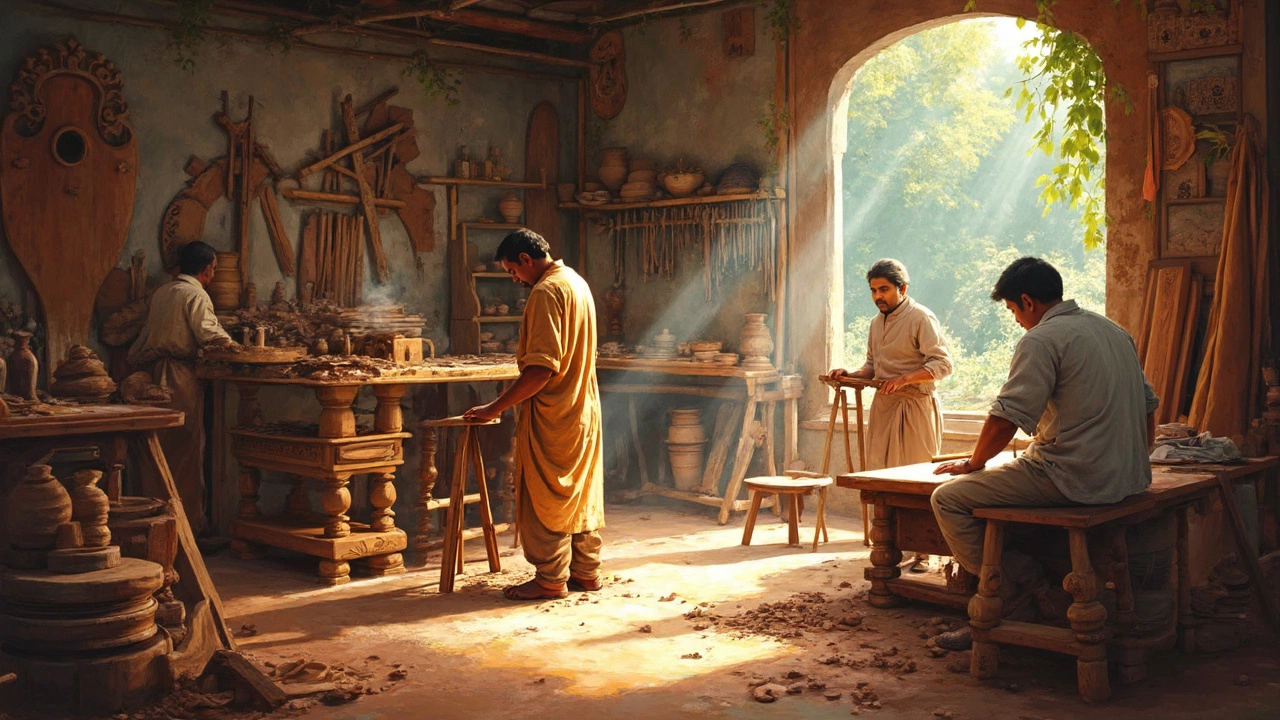- Indian Textile Industry Collapse: What Really Happened and What It Means for Manufacturers Apr 23, 2025
- Who Runs a Manufacturing Company? Understanding Leadership in UK Manufacturing Today Dec 5, 2025
- Furniture Import Costs from India: What You Really Pay Jun 18, 2025
- India's Second Biggest Chemical Industry Owner: A Look Beyond Reliance May 5, 2025
- Are Any Cars Made in China Sold in the US? Oct 30, 2025
Indian Wood Types – What Every Builder and Designer Should Know
India is home to a huge variety of timber, from dense hardwoods that last for generations to fast‑growing softwoods perfect for everyday projects. Knowing which species fits your need can save you time, money, and headaches. Below we break down the most popular Indian woods, their strengths, and when to use them.
Top Native Hardwoods
Sandalwood (Santalum album) – Famous for its scent, sandalwood is actually a slow‑growing hardwood. It’s great for carved furniture, musical instruments, and decorative panels. Because it’s rare, expect a higher price tag.
Tiger‑wood (Goniothalamus spp.) – Recognizable by its striking grain, tiger‑wood is tough and resistant to wear. Use it for flooring, stair treads, or outdoor decking when you want a bold look.
Sheesham (Dalbergia sissoo) – Often called Indian rosewood, sheesham is a favorite for furniture and cabinetry. It takes stains well and holds screws firmly, making it a solid choice for cabinets and doors.
Teak (Tectona grandis) – Though not native to all parts of India, Indian‑grown teak is prized for its natural oils that resist water and insects. Ideal for garden furniture, boat decks, and any exposure to the elements.
Sal (Shorea robusta) – Sal is strong, heavy, and surprisingly easy to work with once it’s dry. It’s frequently used for structural beams, bridge decks, and heavy‑duty flooring.
Choosing the Right Indian Wood for Your Project
First, think about the environment. If your piece will face rain or humidity, go for teak or sal because of their natural resistance. For indoor furniture that needs a rich finish, sheesham or rosewood give a classic look without breaking the bank.
Second, check availability. Some woods like sandalwood are regulated, so you may need permits or certified suppliers. Others, like mango wood (a by‑product of fruit trees), are inexpensive and eco‑friendly, perfect for budget cabinets or decorative items.Third, match the wood’s hardness to the job. A Janka rating above 1,200 lb‑force indicates a hard wood suitable for floors and heavy traffic. If you’re making a lightweight shelf, softer woods like eucalyptus can work fine and are easier to cut.
Finally, consider sustainability. Look for FSC‑certified or locally sourced timber. Choosing wood from responsibly managed plantations helps protect forests and often results in more consistent quality.
In practice, a simple decision tree can help: Outdoor? → teak or sal. High‑traffic indoor? → sheesham or tiger‑wood. Budget‑friendly decorative? → mango or rubberwood. Need a fragrance or luxury feel? → sandalwood.
Remember, good wood lasts longer when it’s properly seasoned. Let timber dry for at least 6–12 months before you start machining. A dry piece swells less, holds nails better, and finishes smoothly.
Whether you’re a carpenter, architect, or DIY enthusiast, knowing the quirks of Indian wood types makes every project smoother. Grab a sample, test the grain, and pick the species that fits your design and budget. Happy building!
Discovering India's Strongest Wood for Durable Furniture
- Aarav Sekhar
- Mar 23, 2025
Dive into the world of Indian wood and uncover the strongest varieties used in furniture manufacturing. From teak to sal, discover how these woods stand up to the test of time and usage, offering reliability and beauty. Learn about their unique characteristics and why they are favored by craftsmen. Get tips on selecting the right wood for your needs.
